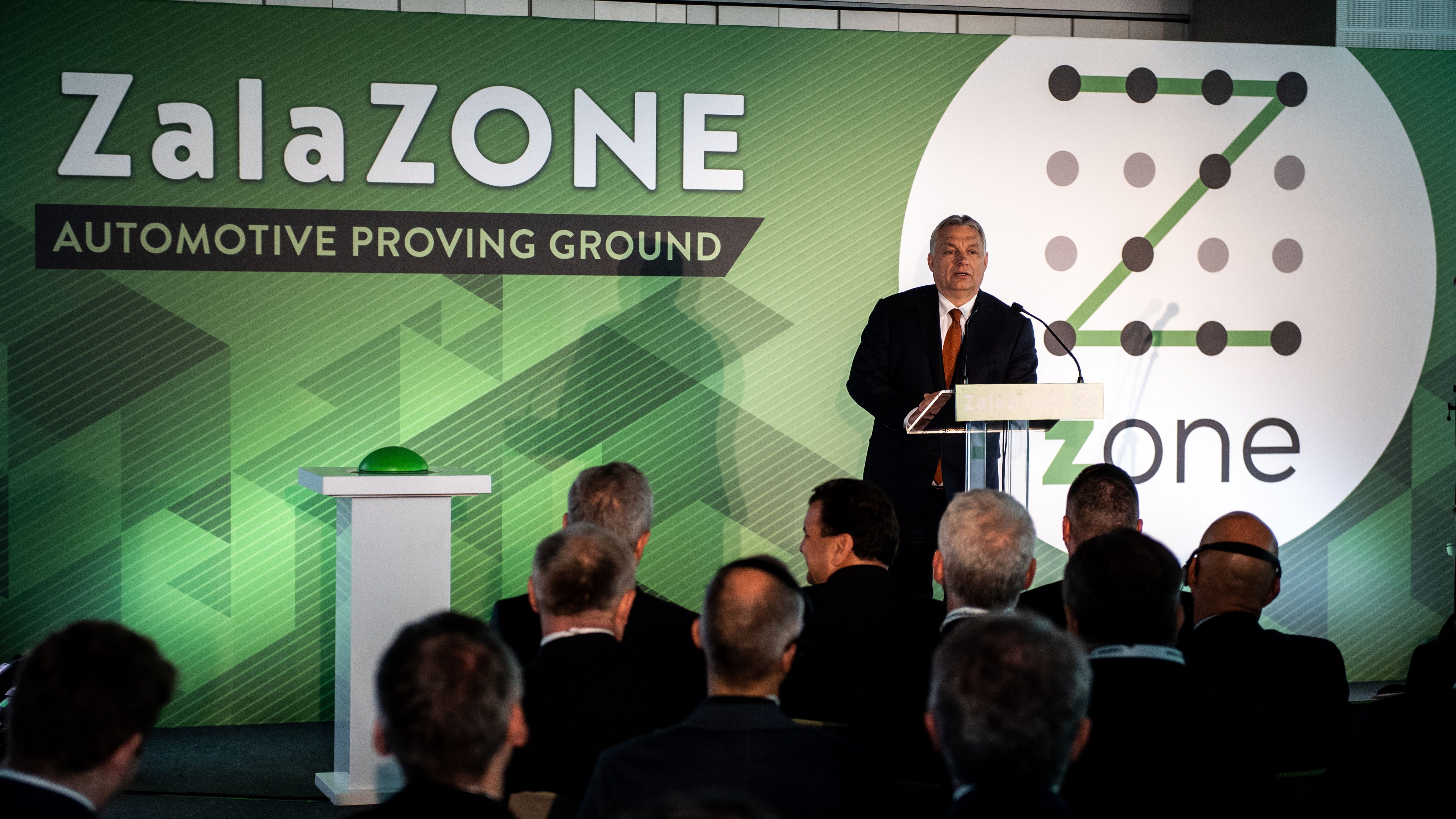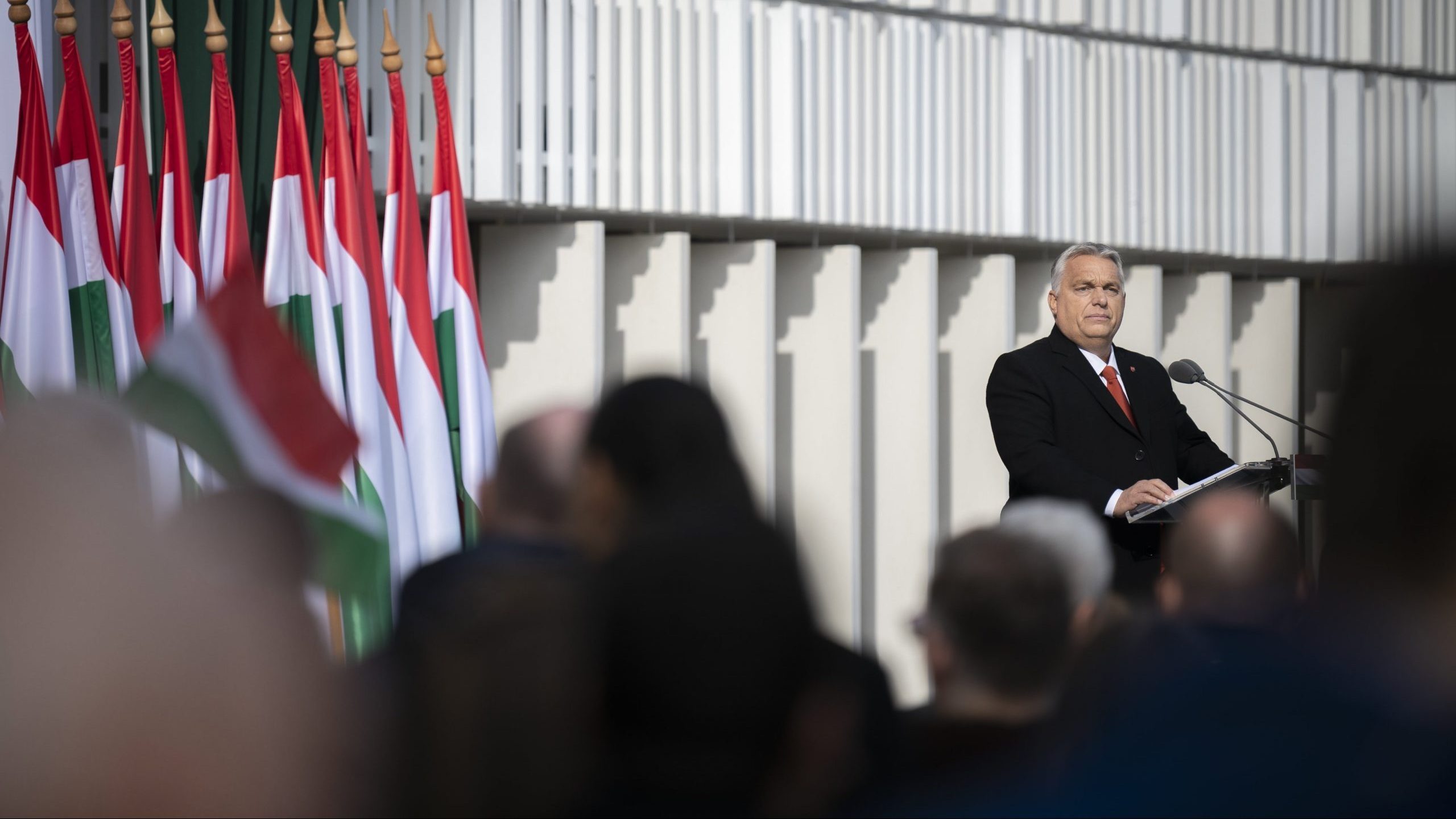
The Prime Minister said that “The Hungarian way of thinking is that, as part of the defence of our identity and borders, the preservation of three things is necessary: the European way of life; the European economic model; and the world’s largest internal single market”.
He stressed that the financial and migration crises and Brexit warn us that “if we fail to pay attention, if we fail to elect appropriate leaders, if we fail to make good decisions, if we fail to take bold steps, then Europe may experience long-term decline”.
He expressed the hope that after the European Parliament elections the continent will have leaders who want to strengthen the security and socioeconomic situation of citizens and Europe’s sovereignty.

Regarding the automotive industry test track, Mr. Orbán said that “the future around us has begun; it is called the digital economy, or Industry 4.0 […] and this project is the first ticket we have bought for the journey into that future”.
The Prime Minister expects that at the Zalaegerszeg test track a regional industry centre will be created with a catchment area which will extend across the entire region – and indeed further across Europe. The project received HUF 45 billion from the state budget, and completion of the second phase is planned for 2020, he said.
Mr. Orbán also mentioned that today there are 620 automotive industry businesses in Hungary, and fifteen of the world’s twenty most important vehicle manufacturers and automotive industry suppliers have plants in Hungary.
He said it is in the national interest that these companies see Hungary as a country where a competitive advantage can be gained not only in production and assembly, but also in development.
This does not seem such a far-fetched plan, he said, as today Hungary is much more than just an assembly shop: at present some 10,000 automotive industry development engineers and another 10,000 telecommunications engineers are working in the country.
There are forty automotive industry research facilities, and their operation and development will receive HUF 800 billion in the current EU financial cycle, he said.

Regarding the Government’s research and development policy, he underlined that this year the central budget has allocated more than HUF 140 billion to research and development and innovation in Hungary, and it is expected that next year the available state funds will increase by another HUF 30 to 40 billion. In his view this clearly shows what is behind the dispute related to the Hungarian Academy of Sciences: the question is not what should happen to the Academy, but what should happen to Hungarian innovation and research. “Now that we want to spend more money on it […] we would obviously like to use it well and effectively,” he stated.
The Prime Minister further urged Europe to keep up with its competitors on the path towards the digital era, and to preserve “its digital sovereignty”.
Welcoming the attending guests, Mr. Orbán also briefly touched on the political crisis in Austria, pointing out that “this time our Austrian friends are not present here, because over there they’ve announced the start of an impromptu hunting season”. He said that this underlines how important political stability is in the life of a country.

Local Member of Parliament László Vigh, who is also ministerial commissioner for the test track, said that the 265-hectare site has a two-kilometre handling course for testing stability, steering and braking systems, and lane keeping assist functions. It has a dynamic platform with a diameter of around 300 metres and an 800-metre entry straight, which is also suitable for carrying out so-called “moose tests”. Braking systems can be tested in an eight-lane surface, he said.
The first five-hectare area of the “smart city zone” – which simulates urban conditions – has also been completed. Mr. Vigh added that there is a 2,000-square metre technical building which is large enough to accommodate sixteen cars and three trucks, and which has a 300-seat conference room suitable for the presentation of vehicles.
The ministerial commissioner said that in itself the area of 265 hectares is an innovation and a sign of the future. There, he said, in the interest of safe transport and the transport culture of the future, “fifth-generation infocommunications systems, artificial intelligence, control theory, robotics, philosophy, education and computer sciences” meet in “Silicon Valley”.

As host of the event, Mayor Zoltán Balaicz recalled that in 2015 Zalaegerszeg had embarked on a period of dynamic growth. The county’s largest project – the M76 dual carriageway linking Zalaegerszeg and the M7 motorway – is already under way, and a connection to the M8 is being planned. In the past four years 4,000 new jobs have come into being in the city and unemployment has fallen to 2.5 per cent.
The Mayor also highlighted that the Prime Minister announced the construction of the test track in May 2017, the foundation stone was laid one year later, and the first phase is now complete after two years.

After the formal speeches, Prime Minister Viktor Orbán, Minister for Innovation and Technology László Palkovics and Managing Director of the test track András Hári collectively pressed a button symbolising the start of the track’s operation. Following this those present – including ministers, ambassadors and executives from major local and foreign companies – had the opportunity to view the test track and acquaint themselves with the advantages of the 5G network which telecommunications companies have set up.

